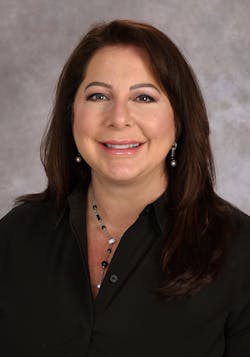A very large percentage of medical errors in hospitals occur either because of poor communication or because serious clinical issues are not recognized in time. And the challenges around patient safety and successful patient monitoring in the inpatient setting multiply exponentially in the neonatal intensive care unit (NICU) setting.
That’s why clinician leaders at Phoenix Children’s decided to make a major change, based on internally developed predictions that found that 99 percent of serious patient safety events could be averted in the NICU, if innovative steps could be taken.
Based on that understanding, more than a year ago, leaders at Phoenix Children’s developed the Phoenix Children’s Clinical Nurse Attending Program. Phoenix Children’s leaders believe that their program is to be the only one of its kind among health systems. It places seasoned nurse leaders in a position of oversight so they can help nurses and physicians identify and address issues as early as possible. Now over a year into the program, Phoenix Children’s has had zero patient safety events since its launch. The initiative was spearheaded by chief nursing officer and senior vice president of patient services Rhonda Thompson, D.N.P., MBA, R.N., NEA-BCR.
Thompson brings a wealth of experience in nursing leadership and a passionate focus on quality care and the patient experience. In her current role, Thompson promotes and develops Phoenix Children’s professional RN practice and collaborates with physician leadership and others to drive continuous improvements in clinical services and patient outcomes. She plays an active role in the organization’s decision-making structure and strategic planning to prepare for the health system’s continued growth. She earned her doctorate of nursing practice (D.N.P.) from Rush University in Chicago, and also holds a master of business administration from University of Phoenix. Thompson spoke recently with Healthcare Innovation Editor-in-Chief Mark Hagland about the conception, development, and implementation of the Clinical Nurse Attending Program. Below are excerpts from that interview.
Can you share with us the origin of this important initiative?
Like many organizations across the country, we looked at technology, and how it can support patient safety. And we have a pretty phenomenal innovation and technology group here, and we have something called the WATCHER Program. It indicates what’s happening with patients, around sepsis. We learned quickly that technology is awesome, and people resources are awesome, and that we needed to think about bringing those two resources together. So we rolled out this WATCHER Program and in parallel, created the Clinical Nursing Attending Program. You think about how physician attendings help the residents, and that was the concept that we wanted to translate into nursing practice. So we built a job description that meant that these are the nurse experts, the nurse resource that nurses can go to if there are any questions they have with their patients.
And in the pilot stage of their program, the WATCHERs would review the patient’s WATCHER scores. They would work with the bedside nurse to discuss what they were seeing with the individual patient. You’re hearing across the country, the nursing shortage, and we’re rely depending on newly licensed nurses. So these folks were really that kind of right hand, to help coach them through a patient situation. And when we look at our data, all of the indications for the WATCHER Program—objective—temperature, blood pressure, heart rate. One of the most statistically significant indicators is what’s called the Nurse Worry Score. That means using your intuition and not just looking at the monitor. A patient’s BP might be in the normal range, but it’s abnormal for that particular patient in their situation. Every department has two clinical nurse attendings, one day shift, one night shift. And what we’ve seen—I can’t even talk enough about the impact this has had on patient care and serious safety events. We’ve seen a lot fewer patients coding in the ICU because of early intervention with clinical nurse attendings’, who will stay with the bedside nurse and look at an antibiotic, etc. This has had an impact in areas such as those approached by the Rothman Index.
[The Rothman Index is named in honor of Florence Rothman. In 2003, Florence underwent an operation to replace a heart valve at Sarasota Memorial Hospital. Although her health initially improved after the operation, it gradually worsened until she died 10 days after the operation. Her sons Michael and Steven Rothman determined that it was the overall system of care that failed her by not detecting her gradual health deterioration. Their solution was to develop a simple measure of a patient’s overall condition that can be plotted versus time to show a doctor or a nurse whether a patient is recovering or deteriorating. They worked with Sarasota Memorial Hospital by analyzing thousands of patient records in the Electronic Health Record to develop the Rothman Index. The Rothman Index captures data found in a hospital's electronic health record and displays the progression of a patient's health over time. The Rothman Index generates a regularly updated health score synthesizing routine vital signs, nursing assessments, and lab results, for display in a user-friendly graphical format, summarizing thousands of pages of patient data at a glance. The Rothman Index simplifies the tracking of patient progress and detects subtle declines in health. Rapid response teams, physicians, and nurses have the ability to see multiple patient graphs simultaneously. This allows for earlier interventions and a summarized understanding of a whole unit.]
So in other words, one element in this work involves connecting the dots in a way that the bedside nurse might not otherwise be doing?
That’s correct.
What were some of the major challenges involved in developing the program?
Initially, one of the challenges was obtaining buy-in from all of our partners, including physician and pharmacy partners. The other thing was ensuring that we were absolutely going to focus on patient safety. And we had to have the buy-in from executive management that these nurses wouldn’t be pulled in just to take on five more patients. They’ve now become a resource to the physicians and residents. And of course, anytime you’re creating something like this, there’s the temptation to say, when will we pull them into staffing? But once everyone saw the benefits, it was bought into.
Have you been able to extract any metrics on successful early intervention for emerging sepsis?
We’re collecting a lot of data now related to early intervention afforded by the WATCHER Program.
You’re the first hospital in the country to create a nurse attending program, correct?
That’s my understanding. CNOs at children’s hospitals across the country are very eager to try to recreate this.
What would your advice be to other hospitals whose leaders might like to try this?
You’ve got to be persistent and stay strong in creating an environment where this is truly a resource and not pulled into staffing (day-to-day bedside nursing).
How do you see this program evolving forward over the next few years?
I’d like to see this evolve with technology. We often think we’ll implement a new technology, or a new resource, and either would save the day. I don’t know what the advancement of technology will be like. But I really see this advance together.



